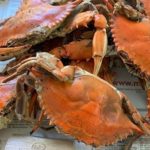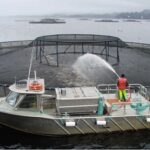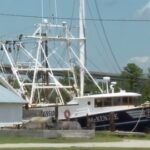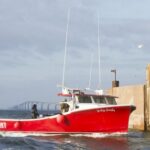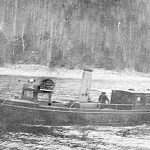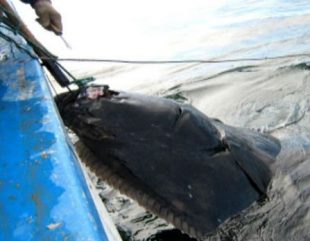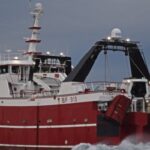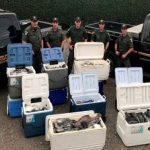John Johnson
John Johnson is a featured writer at fisherynation.com. Comments are welcome.
Staying Alive In The World’s Most Dangerous Job w/ Joel Woods
03/16/2014 10:52
Commercial fishing is the world’s most dangerous job. Even with all of the advances in safety equipment and modern weather prediction the chances of a fisherman being injured or killed still remain very high. Life at sea on a fishing vessel can be very unpredictable, urgent situations that require a rapid response happen often when working in an environment that is always in motion. Heavy equipment and rigging under shifting amounts of load and strain can fail suddenly with disasterous results for anyone who is unable to get out of the way. Mechanical failures can cause the loss of the fishing vessel and entire crew and they happen all of the time, especially when bad weather and sea conditions make life difficult for both men and machinery. Good maintainence and safe working practice can only lessen the risk, the difference between life or death is often a split second’s decision. Those that have the ability to make that decision make it home in one piece, for those that don’t the hospital is often too far away.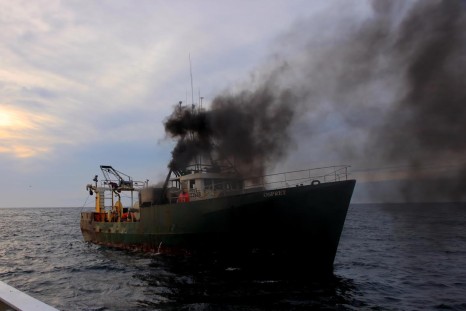
The Osprey (Shown Above) has had a catastrophic failure of their main propulsion engine while towing a fishing net. Here she struggles to get the net up off of the bottom with what little horsepower she has left.
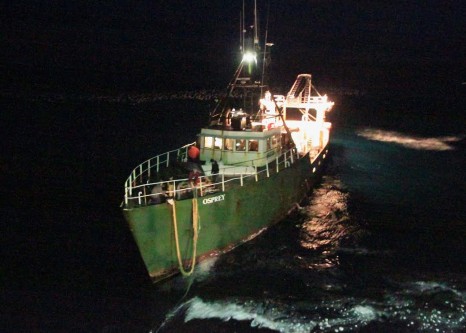 Osprey is dead in the water and we are taking her in tow. It is a long way to Gloucester from George’s Bank and the weather is coming up as it often does when night falls out on the ocean.
Osprey is dead in the water and we are taking her in tow. It is a long way to Gloucester from George’s Bank and the weather is coming up as it often does when night falls out on the ocean.
 Joel Woods (shown above) is demonstrating a perfect response to a situation that could easily have resulted in death or dismemberment. The tow line to Osprey came tight so suddenly the winch operator didn’t have time to slack the tow line. Notice the water droplets flying out of the rope and how small it looks, it has become tighter than a banjo string that has just been plucked. That is a good sized spectra rope with a breaking strength that exceeds a heavy steel cable twice it’s size. The shutter speed on this image was about 1/20 of a second and the rope is moving so fast it looks like 5 ropes. Joel’s experience, quick thinking, and fast reaction time serve him well as you see him going from realization that the rope is going to break to full speed away from the direction of the trajectory the rope will follow when it snaps back with enough force to rip a man (or several) in half.
Joel Woods (shown above) is demonstrating a perfect response to a situation that could easily have resulted in death or dismemberment. The tow line to Osprey came tight so suddenly the winch operator didn’t have time to slack the tow line. Notice the water droplets flying out of the rope and how small it looks, it has become tighter than a banjo string that has just been plucked. That is a good sized spectra rope with a breaking strength that exceeds a heavy steel cable twice it’s size. The shutter speed on this image was about 1/20 of a second and the rope is moving so fast it looks like 5 ropes. Joel’s experience, quick thinking, and fast reaction time serve him well as you see him going from realization that the rope is going to break to full speed away from the direction of the trajectory the rope will follow when it snaps back with enough force to rip a man (or several) in half.
Mere tenths of a second after the above image was taken the tow line between Western Venture and Osprey parted. It sprang back so fast it couldn’t be seen flying and only the sound of it hitting steel gave any indication of where it went.
Joel demonstrated that he has what it takes to stay alive in the world’s most dangerous job. Do you?
—————————————————–
Exposing The Trouble With Old Boats
John Johnson

.I am currently engineering a fishing vessel named the Osprey. It was built-in 1984 by Sanchez Marine for fishing in the scallop fishery out of New Bedford. Converted to mid-water trawl in the mid to late 90’s she is a part of the herring and mackerel fisheries. The Osprey is not a new boat and some trips she really shows her age.
The images you see here are about holes appearing in the pipes and plates of steel that make up the material that keeps the ocean where it belongs (out of the boat). The pipe leaks were discovered under way while trying to pump out a side hold that had shipped water (probably from the holes in the deck). The flooding caused by these leaks was caught very quickly and due to the slow rate of water coming in offered a moment to do some exposure work with the camera.
I take a lot of pictures of fast moving subjects quick capture of the best possible image under difficult circumstances. Taking a little time with the camera to work on artsy exposure type pictures (while sinking) seemed like a good idea and funny so here is the result of my efforts. I am going to leave the caption copies below so that anyone who has trouble reading the tiny, dim words under the pictures can refer to the bottom of the article.
Weekend exposure is a feature of the NV photographers and I am assuming it is about trying different exposures to expand the skill of setting up the camera for the perfect exposure of any shot. I missed any instuction there may have been.
1 This image is just a starting point. Water pours from a break in the 8 inch pipe behind the main engine in Osprey’s engine room. Notice the black diagonal pipe in the background. It was installed last month due to the same issue.
2 Shutter speed 1/200 of a second, aperture 3.5, ISO 200. The fast shutter speed freezes the water in mid air and makes the stream look really thin.
3 Shutter speed .3 second, aperture 3.5, ISO 200. The water is thicker at this slower shutter speed.
4 Shutter speed .6 second, aperture 3.5, ISO 200. The water stream is very misty and streamy looking now and the image has some blur from hand holding for over a half a second.
5 Shutter speed 1.3 second, aperture 3.5, ISO 200. The water stream is now very streamy but you can see where I am startin to lose it. Things in the background are very blurry from what is a really long hand hold on a boat that is in motion.
6 This is a new pipe that I made and installed as a replacement. This is the best possible repair for a pipe that is springing holes.
7 This evil little hole sprang up while the pipes were all apart (You would have to ask the crew how that is possible because I still don’t understand their explanation). Notice the bunch of small dots surrounding it, That is where a sharp hammer was used to ensure the rest of the pipe was ok.
8 This is a patch type repair made by cutting a piece of pipe and fitting it over the bad spot and welding it on. It is not the best repair but can be expected to hold right up until the stupid pipe starts leaking again.
9 The back deck of Osprey in New Bedford Harbor. Nice little scene but what are those little dots on the deck?
10 Of course… more holes.
11 Notice the texture of this shot. That is caused by pitting, rust and holes generally experienced when the deck of the boat is painted by persons that are somewhat less than qualified to run a paint brush. That and it is just an old boat.
12 The solution an additional plate of steel (called a doubler plate) welded over the top of the holy place. Notice the 6 holes in the new plate that have some weld. Those are put there on purpose to add points of bonding to the steel above and below so that you don’t get flexing in the middle of the two plates. More photos here.



































